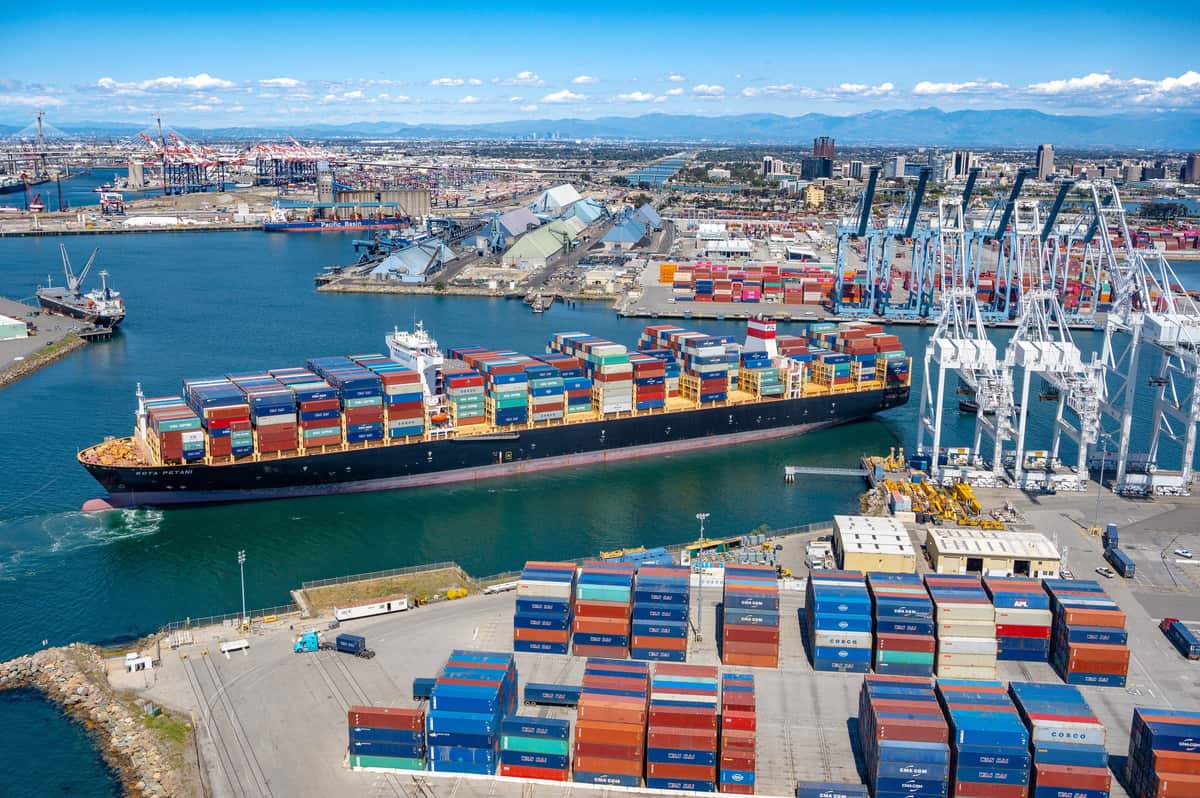Trans-Pacific ocean container rates have eased post-Lunar New Year, despite volumes estimated to be significantly stronger than a year ago.
The latest Freightos Baltic Index pegs rates to the West Coast of around $2,200 per forty-foot equivalent unit and to the East Coast of approximately $3,300 per FEU, more than 20% below 2024 lows.
This trend is likely due to increased competition and less effective capacity management from new carrier alliance rollouts, as well as continued fleet growth, said Judah Levine, Freightos head of research, in a release.
Asia-Mediterranean rates of around $3,500 per FEU are about 20% lower than post-Lunar New Year 2024, while Asia-Europe rates of $2,565 per FEU) are 20% below the 2024 floor despite ongoing port congestion at European hubs. Without tariff frontloading as a factor, easing demand and new carrier alliances are pushing rates down on these lanes, Levine said.
Shipping is bracing for potential disruptions and shifts in trade patterns, he observed, with uncertainty remaining the predominant theme in global commerce.
While President Donald Trump has set an April 2 deadline for new tariff announcements, confusion surrounding the White House’s trade policy continues to mount. The Trump administration has indicated it will narrow the scope of reciprocal tariffs initially proposed for all U.S. trade partners with tariffs or trade barriers on U.S. exports. Only 15% of countries with a trade imbalance will face reciprocal tariffs, but these account for most U.S. imports and bulk of the trade deficit.
The list of targeted countries includes China, Mexico, Canada, the nations of the European Union, as well as potential alternative sourcing partners such as India and Vietnam. Tariff levels will vary based on foreign tariff rates for U.S. exports.
Levine noted that despite earlier reports of postponements, Trump stated that global duties on automotive and pharmaceutical imports would be announced soon, possibly before April 2. Additionally, an executive order signed Monday will apply 25% tariffs on top of existing tariffs to goods from any country purchasing oil from Venezuela, potentially impacting China, Singapore, Vietnam and India.
Further clouding the outlook, the U.S. Trade Representative this week is also holding public hearings on proposed port call fees targeting Chinese-made vessels. American cargo owners, exporters, port labor and ocean carriers have objected, citing major threats to their businesses.
Heightened fears of steep U.S. tariffs on EU alcohol imports led the U.S. Wine Trade Alliance to advise members to halt all shipments. However, overall U.S. import demand suggests shippers continue to frontload due to tariff uncertainty. This is reflected in the recent buildup of empty containers at the ports of Los Angeles and Long Beach.
Find more articles by Stuart Chirls here.
Related coverage:
Trade groups, businesses speak to both sides of proposed US port fees
Port Authority of New York and New Jersey signs 33-year lease with APM Terminals
Report: Top-secret US plans to attack Houthis accidentally shared with journalist
NTSB faults Maryland in Key Bridge collapse, warns dozens of other bridges at risk








0 replies